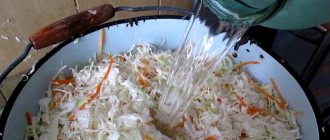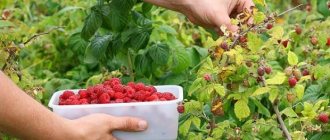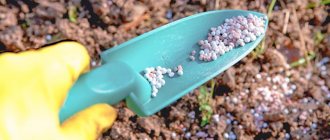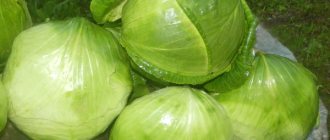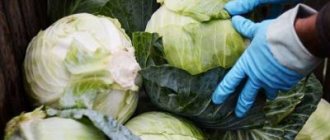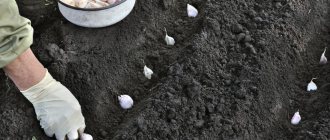Regular and high-quality fertilizing is a prerequisite for good cabbage growth and the formation of strong heads of cabbage. To feed cabbage, you can use complex fertilizers and mineral mixtures purchased in the store, but every farm will have raw materials or waste that are valuable for feeding cabbage bushes.
Types of fertilizers
At each stage of growth, cabbage needs different types of fertilizers and their dosage. To carry out feeding correctly, the first thing you need to know is what types of fertilizer there are and what their differences are.
Top dressings are classified into:
- Synthetic (chemical). They are produced in chemical plants through a chemical reaction between elements. They have an immediate but short-lasting effect. According to the main element in their composition, they are divided into: nitrogen;
- potash;
- phosphorus.
- manure;
- iodine solution;
Let's look at each fertilizer in more detail.
Nitrogen
Fertilizers of this group contain nitrogen in a predominant amount, which is required by cabbage during the period of initial growth, when the green parts of the plant are formed. The most commonly used nitrogen fertilizers are:
- Ammonium nitrate. It is a white-gray composition of small large pellets that easily dissolve in water. Nitrogen content is about 34%. Be careful when using this fertilizer because it is explosive! In addition, consider the total amount of nitrate applied. If there is an excess, it accumulates in cabbage, changing from nitrates to nitrites, leading to damage to the plant. Eating vegetables in this case is dangerous to health.
- Ammonium sulfate. Less safe than ammonium nitrate, but its nitrogen concentration is only 21%. Contains sulfur. It increases the acidity of the soil, so when growing cabbage it is necessary to measure the pH of the soil and alkalize it in time.
- Urea. The nitrogen concentration in the composition reaches 46%. More often used in agriculture on large objects. The use of urea must be very careful so as not to cause an overabundance and chemical burns to plants.
Which is better, urea or ammonium nitrate, is discussed in the following article.
Potash
It is advisable to use fertilizers containing a predominance of potassium at the stage of setting the cabbage head. This element will ensure the optimal flow of all metabolic processes, as a result of which the heads of cabbage will be strong and tasty, without any foreign flavors.
With a deficiency of potassium, the root system of cabbage is weak, which makes it impossible to properly nourish the entire plant. With this problem, the head in most cases does not form.
Popular potash fertilizers include:
- Potassium chloride. It is a large white crystal. The share of potassium in the fertilizing composition is about 60%. This substance is in a form that is easily accessible to cabbage, which determines its rapid action. The use of potassium chloride increases the acidity of the soil.
- Potassium sulfate. In appearance it resembles coarse table salt. Contains 50% potassium. Used for feeding crops that cannot tolerate the presence of chlorine. This fertilizer is quite suitable for feeding cabbage.
Phosphorus
Phosphorus fertilizers are important at the final stage of cabbage head formation, especially for mid- and late-ripening varieties. Phosphorus helps cabbage accumulate useful substances that provide its taste and nutritional properties.
The most popular in use:
- Superphosphate. Contains 18-22% of available phosphorus. Let's dissolve well in water. In acidified soils, the absorption of this element by plants is difficult.
- Double superphosphate. Differs from the previous fertilizer in doubled phosphorus concentration. This feeding is 40-45% rich in it. Most often used on large agricultural farms.
Natural fertilizers
There is nothing more natural than organic fertilizers. However, this positive property easily turns into a negative when the soil is oversaturated with fertilizers of natural origin. Therefore, when using them, take into account the total amount of components in the soil. This is quite problematic to do, due to the fact that natural fertilizers begin to act for a long time after a while.
The video will tell you how to feed cabbage seedlings using simple effective folk methods. Find out how to use nettle infusion, urea and ash:
Most types of organic matter are introduced during autumn arable work or during the preparation of planting holes. The use of natural fertilizers is allowed once every 2-3 years.
The most common fertilizers of this type include:
- Manure. The waste product of cattle is used in a well-rotted state, otherwise the cabbage can be destroyed, causing severe burns to it. Manure is rich in nitrogen, which is released in the spring when organic matter is added in the fall. Mullein solution is used for root feeding of cabbage to stimulate growth. The optimal use option is to use horse manure - it acidifies the soil to a lesser extent.
- Compost. The contents of compost pits are ready for use at least 7-9 months after full filling. This type of feeding is obtained by rotting the plant parts of garden plants, decomposing food waste in combination with peat or soil. Compost is rich in nitrogen, calcium, magnesium, but contains weed seeds and can become a source of various diseases.
- Bird droppings. This type of organic matter, due to its rich composition of micro- and macroelements, can fully replace complex mineral fertilizers. It is used in dry form during autumn arable work. The period of validity of the fertilizer is at least 2 years. Can be used as a liquid fertilizer. To do this, you need to dilute it in a ratio of 1:20 with water.
- Wood ash. The presence of the predominant element in the composition is determined by the source of wood ash. It is generally accepted that this type of organic matter is a potassium fertilizer, although calcium predominates in the composition. It is used to reduce soil acidity and for additional plant nutrition. When applied dry, the rate of wood ash is 200 g per square meter. m. plot, for ash solution (150 g of ash per bucket of water) - 0.5 l/bush.
Special types of fertilizers
Special fertilizers almost always have a natural base. Their action is directed, not long-term, but clearly pronounced.
To strengthen the root system of cabbage, as well as to form a strong, plump head, brewer's or baker's yeast is used. This fertilizer is effective only when freshly prepared and contains beneficial fungi, proteins and amino acids. To prepare it, dissolve 100 g of yeast in 1 liter of warm water and bring the volume to a bucket. Water the cabbage at the root, using 0.5-0.8 liters of fertilizer.
Crushed egg shells reduce the acidity of the soil, thereby creating optimal conditions for the development of seedlings. In addition, it prevents the destruction of the root system by insect pest larvae.
The use of baking soda in the form of root feeding or spraying will protect the cabbage heads from early overripening and the appearance of cracks. Dissolve 20 g of soda in 10 liters of water and apply no later than 2.5-3 hours after preparing the solution.
Banana peel is rich in magnesium and growth hormone, so its use is especially useful at the stage of growing seedlings. You can use this fertilizer in several ways:
- chop and sprinkle under each plant, covering with soil;
- dry and prepare a water infusion (peel of 1 banana per 1 liter of water), watering the seedlings with it;
- dry, grind into powder and sprinkle on the beds.
To prevent cabbage diseases, especially fungal ones, cabbage is sprayed with iodine or watered at the root. To prepare the solution, 20-30 drops of the drug are dissolved in 10 liters of water.
How to prepare iodine-containing fertilizer that will strengthen and improve the health of cabbage beds, watch the video:
What to feed for the formation and ovary of a head of cabbage, feeding table
The peak of feeding aimed at the formation of a head of cabbage is usually mid-summer , end of June, July. At this time, it is customary to use a variety of options. Many gardeners have their own tactics, usually each based on their own observations or preferences.
| Quality of formed heads of cabbage | Type of fertilizer | Periodicity |
| Growth of heads of cabbage. | Nettle infusion (rich in magnesium, iron, boron). | From the second feeding (2-3 weeks after the first), but no more than 3 times per season. |
| Growth and strength of heads of cabbage. | Yeast (amino acids, microelements). | Third feeding. No more than 2-3 times per season. |
| Minimal cracking on the head and leaves | Baking Soda (Calcium) | From the second feeding. |
| Prevents cracking of heads of cabbage. | Boric acid (boron). | From the second feeding. |
| Improves the growth of heads of cabbage and prevents cracking | Potash fertilizers | From the first feeding. |
But remember an important point . The closer the cabbage harvest, the more it is necessary to reduce feeding with nitrogen and nitrogen-rich products. Not only does excess nitrogen lead to the formation of nitrates in the heads of cabbage, but it also provokes the appearance of cracks on them, which significantly reduces shelf life.
Cracked head of cabbage
Basic rules for fertilizing cabbage
The amount of work required to fertilize cabbage and the composition of fertilizers is influenced by the varietal of the vegetable crop, the type of soil and the growing season in which the plant is located. Therefore, when applying any form of fertilizer, follow some rules:
- Calculate the total composition of elements to create their balance, avoiding deficiency or excess of nutrients.
- Before applying fertilizers by the root method, be sure to water the beds so that the root system does not burn.
- If the soil for cabbage has been properly prepared using organic matter, during autumn arable work, additional fertilizer is not required.
- On sandy soils, the frequency of feeding cabbage should be greater than on heavy soil.
- After applying nutrition using the root method, loosen the bed.
- Spray nutrient mixtures over cabbage in the morning or evening.
What fertilizing is needed in August for head growth?
It is not only important to feed the crop in a timely manner. There will be no result if you do not water properly. In dry weather, cabbage needs up to 3 liters of water.
ON A NOTE! Feed should be done in damp soil (after rain or watering). Dry soil slows down the absorption of beneficial microelements by the root system.
In August you need to use organic matter very carefully. A high humus content can lead to fungal diseases or stunted growth of heads of cabbage. Therefore, they think about the condition of the soil during the period of growing seedlings.
Mineral elements are of particular value at this time. They can be fed by scattering them over damp soil between the rows, or they can be prepared as a liquid solution and combined with watering.
Feeding white cabbage
For white cabbage, the best option for increasing the nutritional composition of the soil is to alternate mineral and organic fertilizers, or to use natural fertilizers along with folk remedies.
The number of cabbage feedings and fertilizers applied over the entire period is determined by the variety of white cabbage. The longer the growing season, the more fertilizing is required.
An important point in agrotechnical measures is preparing the soil for planting white cabbage. During deep plowing of the area, add 5-7 kg of mullein or 0.5 g of bird droppings per square meter. m. area. Organic matter can be replaced with complex mineral fertilizers. For example:
- 60 g superphosphate;
- 40 g urea;
- 40 g of potassium sulfate.
Please note that organic matter may contain pathogenic microorganisms that lead to infection of seedlings with fungal or other diseases.
Feeding seedlings
The number of times the fertilizer will be applied depends on the method of growing seedlings. If the process of cultivating cabbage includes picking work, which brings additional stress to the seedling material, then a larger amount of fertilizer is needed to restore strength and develop immunity to diseases.
In this case, feeding is carried out in several stages:
- Fertilization of seedlings is carried out a week after picking. A solution of 25 g of nitrogen fertilizers, 25 g of potash fertilizers, and 40 g of phosphorus fertilizers per bucket of water is used. You can use any complex fat at the rate of 130-150 g per 10 liters of water.
- The second feeding, consisting of double the amount of components of the first feeding, is applied after 12-15 days.
- The third feeding is aimed at preparing the plants for planting in open ground and is performed a week before the expected date. Dilute 30-35 g of saltpeter, 80 g of phosphorus fertilizer and 25 g of potassium nutrition in a bucket of water. The consumption rate of such fertilizing is 0.2-0.3 liters for each bush.
When the method of growing cabbage seedlings does not involve picking, the fertilizer application scheme is as follows:
- When the second leaf is formed, for active plant growth, foliar feeding is carried out with any complex fertilizer at a dilution rate of 5 g per liter of water.
- Before hardening the seedlings, potassium-phosphorus fertilizers are applied to increase cabbage immunity, and nitrogen fertilizers are applied to maintain growth rates.
Feeding cabbage after planting in the ground
To plant cabbage seedlings on the plot, you can prepare fertilized planting holes. Cover their bottom with humus, ash or rotted manure. It is possible to prepare a mixture of fertilizers and add it to planting holes. For 1 sq.m. beds, take 0.5 kg of humus or compost, 1 tsp. superphosphate and wood ash. Place a layer of straw on top to limit contact of the plant root system with organic matter.
If such preparatory work is not carried out, then after planting the seedlings in open ground, after 12-15 days, feed them using nitrogen fertilizers. Dilute 0.5 liters of mullein or 20 g of ammonium nitrate in a bucket of water. The consumption rate of such a solution is about 500 ml per root. It is allowed to spray seedlings with a solution of nitrate (2 boxes of fertilizer matches per 10 liters of water).
After 2-3 weeks, feed the culture with ash infusion. To prepare it, mix 10 tbsp. l. wood ash and 10 liters of water. Let it brew for 4-5 days, stirring the mixture occasionally. Add 2 liters of water to the infusion and pour 300 ml onto the seedlings under each root.
For active growth of white cabbage
To activate the growth of white cabbage, use any of the feeding options by dissolving fertilizers in 10 liters of water:
- a glass of mullein;
- 15 g urea;
- glass of wood ash + 2 tbsp. l. with a pile of superphosphate;
- 15 g of urea + 15 g of potassium fertilizer + 25 g of superphosphate;
- 20 g ammonium nitrate.
In rainy weather, it is possible to apply any complex fertilizer in dry form. Sprinkle 100 g of fertilizer on the surface of the bed for each square. m.
If the seedlings have slowed down their growth, feed them with Foscamide or Nitrophoska, diluting 20 g of fertilizer in 10 liters of water.
How to feed cabbage to form a head of cabbage?
To form a cabbage head, the rate of fertilizer and its consumption for each plant root must be increased. The following types of fertilizers, designed for 10 liters of water, will help in obtaining a rich cabbage harvest:
- 1 tbsp. l. superphosphate + 1 tsp. potassium magnesia;
- 1 liter of mullein infusion + 1 tbsp. l. superphosphate;
- infusion of wood ash or dry application;
- potassium sulfate - 40 g.
Preparing soil for seedlings
If the gardener uses a soil mixture prepared at home, then to the mixture of humus, turf soil and river sand you need to add (the composition of the soil is suitable for white cabbage and cauliflower):
- a glass of sifted wood ash per 10 liters of substrate to normalize the acidity of the soil;
- a glass of powdered eggshells;
- potassium sulfate powder 50 g;
- It is advisable to dissolve 70 g of superphosphate in a small amount of water and thoroughly moisten the soil for seedlings.
For Chinese cabbage, take good humus, peat and sand in equal parts, and only 1.5 cups of wood ash per 10 liters of soil mixture are added as fertilizers. Before planting in the ground, Chinese cabbage does not require fertilizing.
Useful: when to plant cabbage seedlings in 2022 - follow the link
What do you feed Cauliflower?
Cauliflower, unlike white cabbage, has a positive effect on the application of fertilizing, the basis of which is bird droppings.
To obtain fertilizer, fill the bucket 1/4 part with organic matter and add the rest with water. Leave the mixture to infuse for 7-10 days, stirring it occasionally. After the time has elapsed, dilute the resulting concentrated solution with water in a ratio of 1:10.
The consumption rate of this natural fertilizer is 700-1000 ml per unit of plants.
Find more information about growing cauliflower here.
Important elements for cabbage nutrition
The fact is that cabbage has a weak root system. And the power of cabbage lies in its foliage. Here it is important to quickly grow a good green mass, and then you need to tie a head of cabbage from the leaves. That is why timely feeding of cabbage is imperative. Important
: at different phases of development, cabbage needs different nutritional elements, and their quantity at these phases is also different.
- Nitrogen
. It is he who is responsible for increasing the green mass of plants at the beginning of the growing season. Nitrogen also affects chlorophyll synthesis and plant metabolism. - Potassium
primarily contributes to the metabolism of cabbage. Due to it, plants become more resistant to diseases and pests. And yet, the cabbage turns out more juicy and tasty. - Phosphorus
is required for cabbage to a lesser extent than potassium and nitrogen, but its participation in the development of the plant is important.
Phosphorus affects
: the process of photosynthesis, with its help the root system is improved, and it also improves the taste and helps to enlarge the heads of cabbage.
Next on the list are microelements that the plant needs in smaller quantities. But this does not make them any less important:
- Iron
is involved in oxidative and reduction processes. - Boron
is needed for the formation and development of heads of cabbage, while it improves the taste of cabbage. And yet, boron increases the shelf life of cabbage. - Molybdenum
promotes the development of the root system, as well as the above-ground parts of the plant.
In addition, it promotes better absorption of nutrients. Important
: molybdenum helps the plant better absorb nitrogen, phosphorus and calcium. - Sulfur
has a positive effect on the growth point. - Magnesium
affects the plant's absorption of phosphorus. Also, with the help of magnesium, cabbage’s resistance to diseases and adverse weather conditions improves. All about cabbage diseases. - Copper
provides decent protection against various fungal infections. - Manganese
helps improve photosynthesis processes. - Calcium
greatly influences resistance to fungal infections. This is what is lacking in acidic soils. Therefore, in such cases, it is necessary to carry out liming during digging in the autumn.
How and what to feed Beijing cabbage?
Chinese cabbage has a short growing season, so the use of nitrogen fertilizers is not only impractical, but also dangerous. The accumulated nitrates will not have time to dissolve and be absorbed, which can lead to poisoning when eating vegetables.
Foliar feeding for this type of cabbage is also inappropriate. The only thing the plant needs is to enrich the soil during its autumn preparation for the upcoming season. To do this, during the plowing period, apply such fertilizers per square meter. m:
- manure - 5 kg;
- superphosphate - 30 g.
Or:
- manure - 5 kg;
- potassium sulfate - 30 g. It can be replaced with 4 tbsp. wood ash.
If such measures have been taken, then Chinese cabbage will quickly gain strength and grow. More about growing Chinese cabbage is written here.
What does cabbage need in August?
Cabbage, like any other crop, needs nutrition. The plant quickly responds to feeding with positive dynamics in growth and formation of heads of cabbage. Depending on the season, cabbage needs different elements. In August, those that will stimulate the growth of heads of cabbage are chosen.
By this time, early-ripening varieties of cabbage have already formed, but mid-ripening types are actively spinning heads of cabbage. At the same time, in late varieties the formation of the rosette ends.
In this regard, culture should devote all its energy to these processes. Cabbage needs active watering (the plant loves water during any growing season).
For normal growth and formation of heads of cabbage in August, phosphorus, potassium, calcium, and magnesium are needed. They should predominate in feeding.
But it is equally important to feed with the following microelements:
- iron;
- molybdenum;
- boron;
- magnesium;
- sulfur;
- manganese;
- copper.
All necessary substances can enter the soil or through the leaves. Cabbage reacts equally positively to foliar and root feeding.
Fertilizer Broccoli
Broccoli cabbage, due to its poor survival rate after transplanting into open ground, is considered capricious and finicky. In fact, its agricultural technology and cultivation methods are not much different from white cabbage.
Fertilizing Broccoli should not be done immediately after planting the seedlings on the site. Give the plants a week to adapt and then fertilize. The best option in this case is the use of organic fertilizers instead of mineral nitrogen fertilizers. Dissolve 1 tbsp. mullein in 10 liters of water and pour the cabbage under each bush. The solution consumption rate is 200-300 ml for each root.
Hydrogen peroxide for cabbage
Hydrogen peroxide is usually used to feed and treat cabbage seedlings.
Such processing is necessary for:
- destruction of harmful microorganisms;
- activation and acceleration of seedling growth;
- protecting roots from putrefactive microorganisms;
- saturation of the soil with oxygen;
- healing plants from diseases;
- earth oxidation.
Photo of hydrogen peroxide for cabbage
It’s easy to prepare a solution of this fertilizer:
4 tbsp per 2 liters of water.
l. peroxide. You can feed cabbage once a week. Useful article:
How to improve the soil, its fertility, composition, structure
Feeding Brussels sprouts
Agricultural technology and fertilization of Brussels sprouts are practically no different from the white cabbage variety of this vegetable crop.
Before planting Brussels sprouts, 10-14 days in advance, add one per square meter. m. plot 4-5 kg of rotted manure or compost. You can replace organic matter with a mixture of one-component mineral fertilizers or complex fertilizer. This will strengthen the immunity of the vegetable crop and ensure the formation of a rich harvest.
After 10-12 days, feed the young plants with nitrogen-containing nutrition. It is advisable to alternate organic and mineral fertilizers. Use mullein, bird droppings, or ammonium nitrate.
When the head formation phase begins, Brussels sprouts need potassium and phosphorus. Potassium-phosphorus fertilizers and wood ash will help ensure the replenishment of these elements. It is possible to use ready-made liquid fertilizers and folk remedies.
Currently, there are no problems with feeding cabbage. Fertilizers of different types and price categories are available on the market. By applying advice and knowledge on adding nutrition to cabbage, it will be easy for the gardener to carry out the work itself, and the vegetable crop will reward it with a generous and healthy harvest.
0
1
Copy link
Preparing the hole before planting cabbage
If the site has not been filled with the necessary fertilizers since the fall, then the nutrient mixture must be applied directly to the holes. To do this, you can use two options:
- Organic fertilizer. You need to add a good handful of compost or humus to the moon, to which add wood ash (two matchboxes are enough). All this needs to be mixed with soil and the seedlings should be planted.
- Organo-mineral fertilizer. This option consists of a tablespoon of ash, a teaspoon of nitrophoska or superphosphate and half a kilogram of compost or humus. Mix all this with the soil in the hole before planting.
Chemical substances
Such fertilizers contain one active element. They can be administered separately or combined with other drugs. Chemical fertilizers are divided into
- ammonia - necessary at the initial stage for rapid growth;
- phosphorus - used at the stage of flowering and fruit set to improve the quality of the crop;
- potassium - needed to obtain a good taste of fruits and increase their shelf life.
Basic chemicals:
- Urea or carbamide is 46% nitrogen. The drug is released in the form of white crystals. Due to the high concentration of the active substance, you need to work with it with caution. Exceeding the dosage will lead to unpredictable consequences.
- Ammonium nitrate contains 34% nitrogen. The drug is white, crystalline, with a small amount of impurities. As with urea, the dosage should not be exceeded due to the high concentration of nitrogen. This leads to the accumulation of nitrites in the fruits.
- Ammonium sulfate. The nitrogen concentration in it is reduced to 21%. When using it, it is necessary to periodically check the soil for acidity, since the composition contains sulfur, which increases this indicator.
- Potassium chloride is a white crystalline powder. It consists of 60% active substance and is well absorbed by the root system of plants.
- In the composition of potassium sulfate, the share of the useful element is reduced to 50%. The granules also contain sodium, sulfur and iron. This drug has a positive effect on soil acidity.
- Superphosphate contains up to 22% phosphorus. This fertilizer is dissolved only in hot water. It is used at the stage of head formation. Double superphosphate is also commercially available, in which the phosphorus concentration reaches 45%.
Ammonium nitrate requires careful handling. She's explosive.
What kind of soil does cabbage like?
Having understood the microelements, it is necessary to understand which soil the crop prefers.
To achieve a good harvest, the soil must have certain features.
Firstly, cabbage feels comfortable in soil with a medium or low level of acidity.
Secondly, the soil should allow air to pass through and be slightly loose.
It is also worth remembering that the crop grows extremely poorly on clay soil, and disinfected open soil in a greenhouse will be just right for it.
Phosphorus, potassium and nitrogen as the key to the growth of young seedlings
For full development, plants need phosphorus, and it is applicable for crops of all ripening periods. An essential additive containing this substance is bone meal. In addition to phosphorus, it also contains other useful components. It must be added to the soil several days before planting.
An equally important fertilizer is superphosphate. It contains: sulfur, magnesium and phosphoric acid. To prepare the working composition, 100 grams of the bulk component are dissolved in 15 liters of water. This fertilizer is used to produce plump seedlings that can grow well.
Advice! The components that make up phosphorus fertilizers are poorly absorbed into the soil, so experienced gardeners recommend applying them in the fall, before digging. Then the compounds will show their full strength, improve soil fertility, which will lead to increased productivity.
Nitrogen is present in organic and mineral fertilizers and is the most important substance that a gardener should use at the stage of growing seedlings. Many people recommend using vermicompost. This is a popular organic compound with a high concentration of nitrogen. This feeding will stimulate growth and enhance root formation, but it is better to use it after picking.
Potassium components are not used at the stage of growing seedlings. This component is first introduced after transplanting the seedlings into open ground, 2 weeks after moving. A combination with superphosphate and urea is often used. Infuse the remedy for 24 hours.
How can you tell by appearance what cabbage is missing?
Cabbage is a whimsical and demanding crop. It must be carefully monitored, making sure to pay attention to the appearance of the cabbage. Using it, you can easily determine which element cabbage lacks at a certain point in time.
- The appearance of yellow spots on the tops of the leaves indicates that the cabbage does not have enough potassium. If you do not take proper measures and begin to actively care for the product, the leaf tissue will gradually begin to die, leading to weakening of the plant and attracting pests.
- Slow head formation or leaf growth indicates that the product urgently needs phosphorus. In this case, the color may change closer to a lilac shade.
- Less commonly, the crop suffers from a lack of magnesium. You can notice this by the appearance of the plant: the leaves begin to turn pale, but the veins remain greenish. Here again we need to take into account the acidity of the soil, because if it is elevated, then magnesium can be toxic.
ATTENTION! If there is a suspicion of phosphorus starvation, it is important to take into account the acidity of the soil, because in an acidic environment phosphorus will not be absorbed.
Treating cabbage with valerian and liquid soap
The unusual, at first glance, assembly of components will help curb the appetite of pests. Due to the predominant "aroma" of essential oils in valerian, and the inedible components of the soap, insects will stay away from cabbage. In addition, soap creates a layer of plaque that prevents it from biting into the leaves.
The mixture perfectly helps to get rid of aphids and curing ants.
For a liter of water, mix 20 ml of valerian tincture and a couple of tablespoons of ground soap. If necessary, increase the volumes proportionally.
To make it easier to apply the mixture to cabbage, use a pesticide sprayer. If the solution is too thick, dilute it with half a liter of hot water. In this case, the soap will completely dissolve and will not clog the nozzles.
The lack of a sprayer can be corrected with an ordinary household sprayer.
